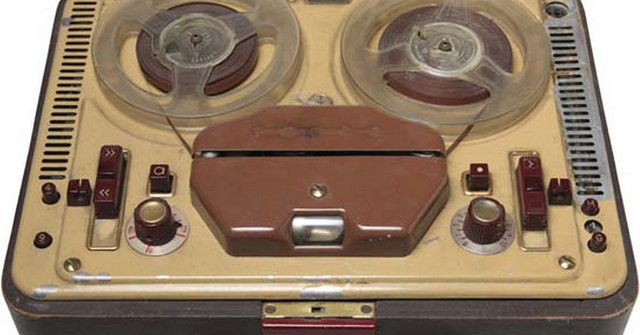Check it out! This is History of Tape Recorder Development
After the advent of microphones and electronic amps, the next technical revolution in sound recording came with the introduction of the invention of magnetic tape recorders. Magnetic recording technology began in 1898, when Valdemar Poulsen patented Telegraphon, a device that records electrical audio signals from telephone transmitters as a variation of magnetic flux on steel piano wire lengths.

image source [1]
Sound recording techniques evolved for a very long time over the next 30 years. In 1930, advances in the electronics field enabled the first successful commercial wire recording to be introduced as a dictation and recording machine in Europe and North America.
Recording media from solid steel, wire or tape, remained the dominant magnetic recording form outside Germany until about 1950. The most interesting recording of this type is the Blattnerphone recorder, or Marconi-Stille.
The large device, recorded on a 3 millimeter solid steel band, was developed in Germany and sold to several radio broadcasts, including, in 1935, sold to the Canadian Broadcasting Corporation. At the same time as Blattnerphone was introduced, other German researchers perfected the method of thin celluloid coatings with iron oxide particles.
These settings are not only much different, just lighter and more compact than steel or solid wire, but the particles are actually easier to draw. After World War II, American producers introduced a copy of the German Magnetophone.
While the first device named Brush BK-401 was designed as a home recorder, the broadcaster and record company immediately began purchasing a large number of professional models such as the Ampex 300. This machine not only became a careful recorder and good performance, long uninterrupted.
In addition, errors can be fixed or various programs are assembled simply by connecting to the desired material. Beginning in the 1950s, the recording engineers also found that by overdubbing or by recording on multiple tracks, they were able to collect the ideal performance without requiring a single overall recording of a flawless ensemble.